Hypersubway of Elon Musk

Elon Musk gained wide popularity thanks to his space projects and electric vehicles Tesla. But, perhaps, life of earthlings will be affected by another his project. Hyperloop is not just a fast transport, but a new quality of life on the planet.
Elon Musk flies into a pipe
The concept of high-speed transport, developed by the engineers of Elon Musk SpaceX and Tesla companies, was published in 2013 in the form of 58 pages of an extensive press release. Hyperloop is described as a closed-loop steel pipeline with a diameter of 2.23 m, fr om which the air is evacuated till a pressure of one thousandth of atmosphere, on a high about 60 km. Pipes are placed on seismic-resistant pylons up to 30 m high. Capsules 25-30 m long with 18 passengers will move inside the pipe at intervals of 30 seconds. A cargo version with pipes of 3.3 m in diameter is also offered, where it is possible to drive into a capsule on a passenger car.

Capsules will move on an air cushion, pumped by fans. Due to the almost complete absence of air resistance and friction, the capsules can accelerate up to 1,220 km / h with minimal energy consumption. Acceleration will be carried out with the help of linear induction motors, in which the stator will be 15-meter rails, located every 15 km, and the rotor - the capsule itself. They will also brake the capsule, returning power to the network. Musk called this system a hybrid of supersonic Concorde, air hockey and railgun.
The journey fr om Los Angeles to San Francisco with a length of 561 km will take 30 minutes. The cost of building such a line was estimated in $ 7.5 billion, and its payback, with a ticket price of $20, should be 20 years, provided that all the necessary electricity Hyperloop will produce itself using solar panels on the outer surface of the pipes. This type of transport will be more profitable than aviation on routes up to 1500 km.
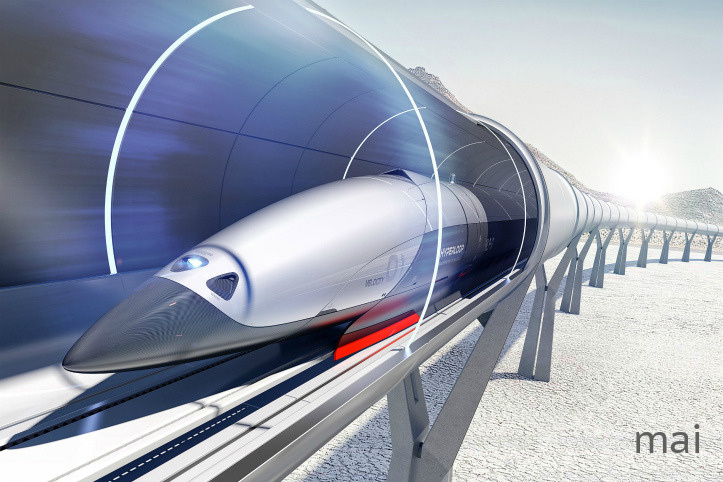
At first glance, all this is an ordinary sci-fi fiction, the lack of which the world does not feel. The very idea of scaling pneumatic mail to the dimensions that allow people and cargo to be moved is not new. In futuristic literature, it was present in dozens of works since the XIX century. The first pneumatic train traveled through a half-kilometer underground pipe in London back in 1864. The idea of using vacuum tubes was expressed by American pioneer of astronautics Robert Goddard in 1909, and the first experiments on the dispersal of the body in the pipe due to the electromagnetic field in 1911-1913 were conducted in Tomsk by Boris Weinberg.
And later such projects were offered repeatedly. For example, one of the designers of the Eurotunnel, the American inventor Frank Davidson, in the 2000s proposed to build a transatlantic vacuum tunnel and, in proof of the reality of his proposal, even dispersed the ping-pong ball in a 300-meter plastic pipe to a speed of 1200 km/h. In the 2000s, a similar Swissmetro project was developed for communication between St. Gallen, Geneva, Zurich and Basel. The company ET3 Global Alliance unsuccessfully punches the identical project, unifying pipe, vacuum and levitation since 1997, and in this project the capsules accelerate to 6500 km / h, which allows to travel around the world in 6 hours. However, the general excitement around this technology arose only after Elon Musk interested in it.
Elon Musk makes problems
Of course, played its role the reputation of a successful businessman, who has already turned the world industry of space launches by the Falcon 9 vehicle. Musk achieved success, despite the fact that he was unanimously predicted flight into the pipe, and not into space. It's worth to listen to the words of a such person, even when he suggests to fly out into the pipe literally. But the important thing is how Musk suggested his idea. He proposed to develop it with the whole world, as it does in open source programming.
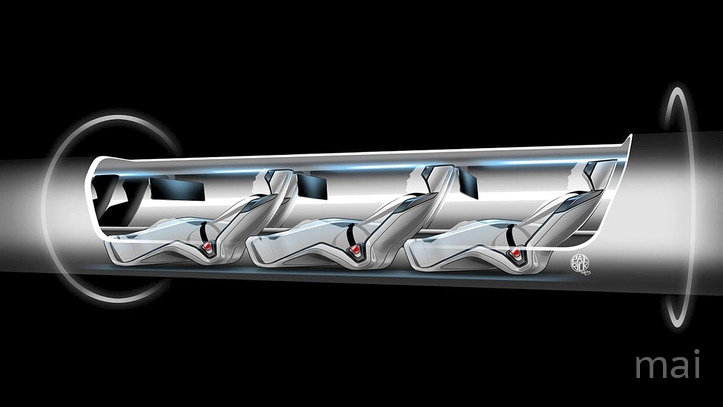
The solution is modern and wise. To begin with, even such capable engineers as those that work for Elon Musk are unlikely to be able to solve all the problems that skeptics are pointing out now. Here is not a complete list of them.
The air cushion capsule in the round tube will rotate around its own axis. Therefore, the idea of using magnetic levitation - a suspension on a strong electromagnetic field, although this solution considerably complicates and raises the cost of the project. To avoid overloading beyond reasonable limits, the turning radius at a speed of about 1000 km/h should be at least 65 km, that is, the pipe should be laid almost in a straight line, and this will inevitably force a line through densely populated areas, which is very expensive and not always possible.
The depressurization of the capsule will lead to an almost instantaneous death of everyone in it, since passengers will hardly be able to wear oxygen masks. No less danger is the depressurization of the pipe itself, if the intruders make a breach in it: a shock wave will occur, the collision with which at such speeds will be fatal for the capsule. The slightest misalignment fr om seismic shifts or even curvature of pipe sections from thermal expansion will lead to vibrations that will be very difficult to withstand. It is not clear how, in the event of a malfunction or a fire, people can be quickly evacuated from a sealed capsule in a sealed tube.
In a word, there are many difficulties and not all of them can be solved simply and even possibly, but this does not mean that they are giving up on the idea. Nobody forbids passenger planes because of the fact that they can not be evacuated at an altitude of 10 km. Neither explosions in the subway, nor car crashes keep people at home.
Elon Musk starts the race
Anyway, as soon as Elon Musk made his call, everyone immediately hurried to the future. This is a train for which no one wants to be late, and projects to create lines of pipelines began to appear around the world with the support of (verbal, so far) local authorities. We can say that the real international race for the right to become the first country to open the road to "hyperspace" has already begun. Potential routes are laid around the world: Los Angeles - San Francisco with branches in San Diego and Las Vegas, Washington - New York, Toronto - Montreal, Mexico - Guadalajara, Dubai - Jebel Ali, Mumbai - Delhi, Seoul - Busan, London - Edinburgh, Prague - Bratislava - Vienna - Budapest, Stockholm - Helsinki - Tallinn, Amsterdam - Paris.
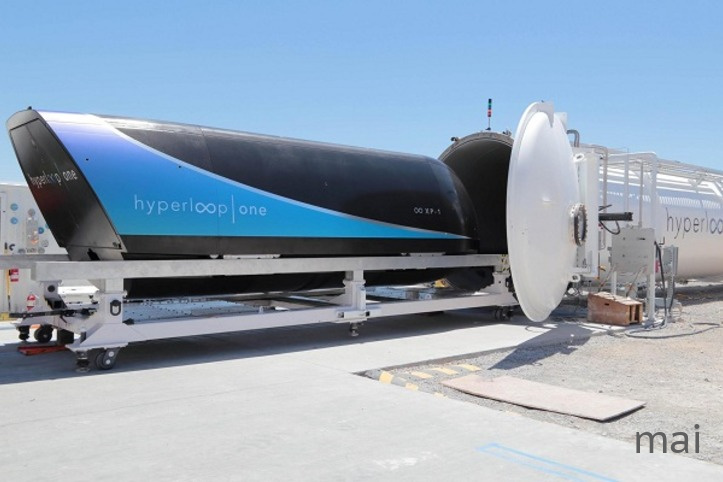
Russia does not stay away from current trends. Announced plans to create a hyperexpress between airports and New Moscow, as well as a line length of 65 km, connecting the port of Zarubino in the Far East and Chinese Hunchun. The company "RZhD" in 2015 created a working group on the application of the vacuum environment for the creation of high-speed transport systems. At the XX International Economic Forum in St. Petersburg in 2016, Vladimir Putin promised to support the Hyperloop project in Russia. Among the "hypercompanies", taking the most noticeable efforts to develop the unexpectedly emerged market, two Californian start-ups stand out. Hyperloop Transportation Technologies Inc. (HTT) has chosen a futuristic idea and the way to implement it is crowdsourcing: the volunteers work on the project remotely and free of charge, counting on future revenues from the realization of ideas. Now about 800 people work on HTT.
The second company is Virgin Hyperloop One. A whole constellation of bright personalities put the hand to its appearance. This is the first investor of Uber Sherwin Pishevar, and the former head of Obama's presidential campaign, Jim Messin, and one of the creators of PayPal David Sachs, and the author of the suborbital tourism idea of XPrize, Peter Diamantis, and one of SpaceX's leading engineers Brogan Bambrogan. And at the end of 2017 the investor of the company became the famous enthusiast of space tourism and one of the richest people of Great Britain Richard Branson. Among investors, Virgin Hyperloop One, by the way, Oerlikon Leybold Vacuum company, one of the shareholders of which is Russian businessman Viktor Vekselberg, as well as Russian venture fund Caspian VC Partners, represents the interests of Ziyavudin Magomedov, who joined the board of directors of Virgin Hyperloop One. The company built a test track DevLoop length of 500 m and a diameter of 3.3 m in a suburb of Las Vegas. On May 12, 2017, a historic event took place here: the world's first test of a fully functional system including a vacuum in a pipe, electromagnetic levitation and electromagnetic overclocking. The speed of 387 km / h was reached. For more, there is not enough length of the route.
Elon Musk joins the game
Elon Musk, who initially announced that he intends to invest in the project only with his ideas and not with money, but seeing the general enthusiasm, hurried yet to take part in the growing business, which has already proved itself perfectly as a means of attracting investment and, more importantly, intellectual resources. It was at the last factor that the far-sighted Musk made emphasis.
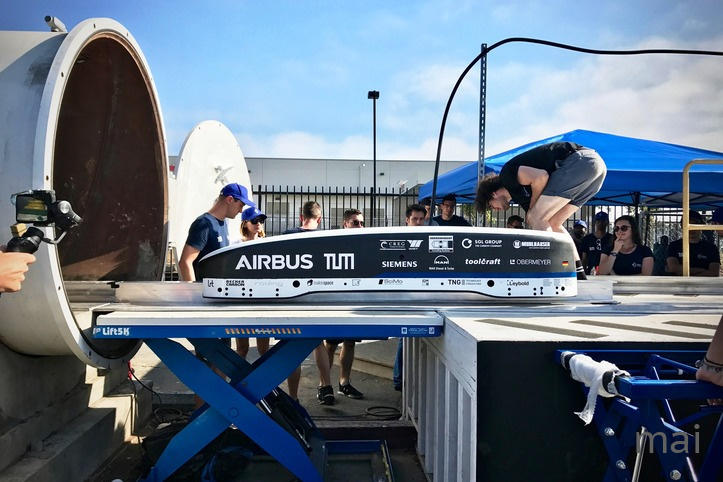
SpaceX has announced an open competition for capsule designs, the best models of which can be tested on a hypertube model length of about 1500 m and a diameter of 1.8 m, built near the headquarters of the company in Hawthorne (California). In the Hyperloop pod competition took part about 700 teams from all over the world, some of which then turned into start-ups. The final stage was held on August 27, 2017. The team of the Munich Technical University, whose capsule developed a speed of 327 km / h, won the first place. However, this record did not last long, and on August 31, Musk demonstrated its own capsule of SpaceX and Tesla development, which accelerated to 355 km / h.
In a word, the process has started, and with all the technical difficulties it is obvious that they are not the main obstacle to the practical implementation of ideas. It is appropriate to recall that the idea of hyper-loop originated in Elon Musk as a critical response to the plans for the construction of the high-speed railroad Los Angeles-San Francisco California High-Speed Rail, wh ere the trains moved at a speed of only 320 km / h, its value was estimated at $ 68.4 billion. It was then that Elon Musk thought about the fifth form , along with the automobile, water, air and rail, of planetary transport. At the same time, he said that his hyper-loop is not only faster than ground-based high-speed trains, for which 600 km / h is the lim it (the record in 2015 was set by the Japanese train L0 series on magnetic suspension - 603 km / h), but also cheaper. But is it?
Elon Musk came down to earth from the clouds
Why do all believe Elon Musk so that even in essence, only a multi-page press release behind his signature in a few years rose to a new industry? Yes, more recently, this man, by the launch of the world's first private super-heavy carrier rocket Falcon Heavy, once again proved that he can significantly push the border of the impossible. But it's not just his success in business, even if it's cosmic. Musk is not just a weird geezer , dreaming of dying on Mars. If Elon was just a dreamer, he would probably choke with enthusiasm for flying cars after hundreds of popular science journalists and millions of gadget lovers. But Musk is a realist and has long said that this idea was impractical: cars that fall from the sky will not be liked by anyone.
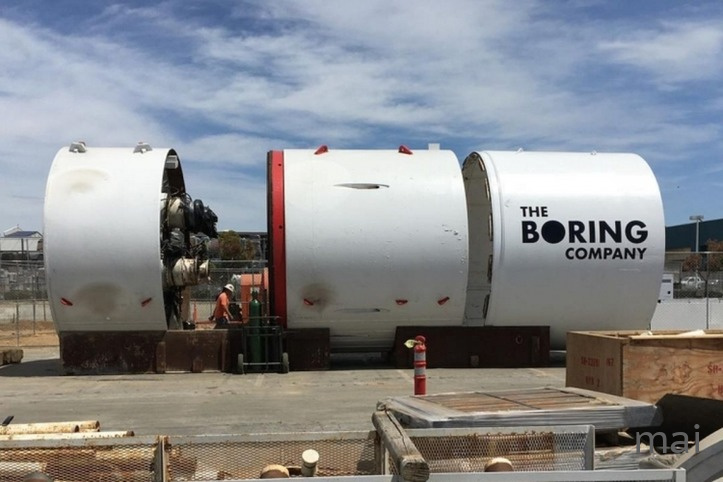
Instead, in 2016, Musk established another company with a very "boring" name - the Boring Company. The course of his thought is obvious: the only real way to save cities from endless streams of cars is to take them underground, wh ere levels of traffic and strips can be made as many as they want: 10, 20, 30, 50, 150, and plan to drive any direction. Expensive? Wrong word! It will cost unbelievable money. But it's real. Look at the modern city: according to planning and ideology, it has long turned into a huge transport hub, in the intricacies of which live cockroaches-inhabitants. Make the city a place for people, not for their cars - how much money should be spent? Conducting the highways under the ground is the only way to turn a troubled metropolis into a garden city. Just for some reason, a person like Elon Musk is needed to "understand" this.
The car of the future will be electric, and there is no alternative to this. It is obvious! Why is it that Elon Musk, and not Mercedes-Benz or Toyota, first started selling electric cars to people? Because Musk is a visionary. He sees the future, most likely, in the literal sense of the word, and this is a quality that will not be replaced by an entire scientific research institute. By the way, you can take cars underground only if they are made electric, otherwise no ventilation can cope. So the ideas of Musk - its electric cars with its tunnels - are naturally joined. Most likely, and his hypersubway will have to be hidden underground, and the author of this idea has already confirmed that the "Boring Company" also implies this goal. To hide the transport pipe under the ground seems all the more expedient that the whole idea is meaningful only if Hyperloop connects city centers, rather than planting people somewhere in the suburbs, as done with air passengers, for which the flight itself is sometimes cheaper and takes less time than the way to and from the airport. Of course, this will make the entire project more expensive by an order of magnitude.
So what? Underground metro also costs many times more than trams, but city authorities still drill tens of kilometers of tunnels a year. Why not drill the tunnels hundreds of kilometers length? How much does a new quality of life for all mankind cost? That is why disputes about how much the hyperloop will cost, on the one hand, the most important, and on the other - meaningless. Imagine a modern metropolis with all its transport infrastructure: taxis, private cars, buses, trolleybuses, trams, including river ones, even with bicycles, but without the subway. Probably, in a few decades life on the Earth with all our planes, trains, ships, autobahns and even hypersonic spaceplanes, but without Elon Musk’s hyper-loop, will also be unthinkable. It is a very pleasant prospect: to live on the planet, moving between cities will be as easy as it is now between subway stations. The journey from Moscow to St. Petersburg will be like a trip from Arbat to Mitino. It will be possible to work or study in Moscow, and return home to Voronezh or Nizhny Novgorod. Sochi for Rostov-on-Don or Volgograd will turn into a city beach. If it becomes dull in the evening in Biryulyovo (or Abu Dhabi) – hop on the hypersubway and after an hour and a half walk in Paris. The picture is so tempting, that, most likely, it will all be so sooner or later. Beyond that- only teleportation.
* All images were taken from the Internet resources